Waqf Act: A Legacy of Appeasement and Aggrandisement
Why the Modi government wants to bring Waqf properties across the country within the framework of constitutional principles without hurting Muslim community sentiments
/wp-content/uploads/2024/08/WaqfAct3.jpg)
A protest against Waqf Board to stop eviction of tenants at Jantar Mantar, New Delhi (Photo: Getty Images)
IMAGINE YOU ARE AN AGRICULTURIST living in Tiruchendurai village, on the banks of the Cauvery river, in Tiruchirappalli district of Tamil Nadu. The year is 2022 and you are planning to sell a parcel of your land to meet some emergency expenses. You expect smooth sailing.
Now, imagine the shock you receive when you attempt to sell your property as the local authorities inform you that you cannot do so since the land does not belong to you but to the Tamil Nadu Waqf Board. Consequently, you learn that you and other residents of your village could not sell the property as your entire village had to obtain a No Objection Certificate (NOC) from the Tamil Nadu Waqf Board prior to the sale in order to officially register it. Ironically, the 1,500-year-old Sundareswarar temple is part of the village and the claim would mean the temple, too, was part of Waqf Board property.
This is a grim reality not just in Tiruchendurai but across many parts of India. The claim, not surprisingly, triggered major protests by the villagers who were shocked at this bizarre turn of events, especially since their land deeds showed no encumbrances or Waqf land claims.
It so transpired that the sub-registrar of Tiruchirappalli received a certificate claiming that around 480 acres of Tiruchendurai village belonged to the Tamil Nadu Waqf Board, a statutory board under The Muslim Waqf Act 1954 that governs Waqf properties in the state. According to the Board representatives, 389 acres of land measured by government-recognised surveyors were registered as Waqf property in 1954 and detailed records of lands owned would take time to be submitted to the authorities.
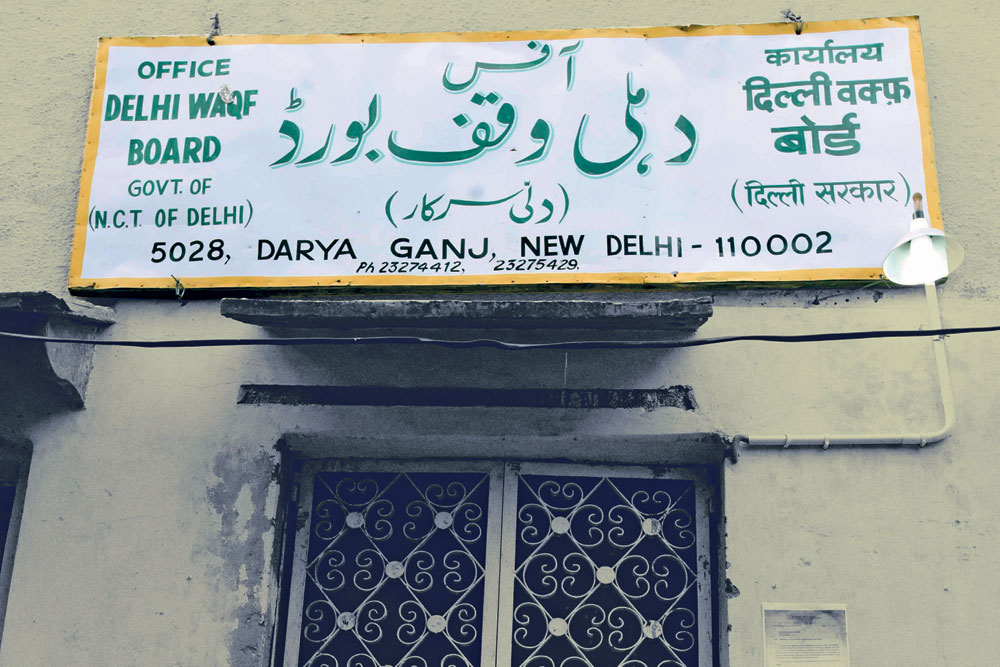
For the present, the status quo has been restored until further orders but a sense of uneasy calm prevails in the village.
At one time, the practice of Muslims donating to the Waqf Board may have been rooted in a rich history of religious endowments and charitable foundations. Whatever the underlying motives for designating the personal properties of Muslims as being donated or appropriated by the Boards as Waqf properties, the Boards governing them are now virtually the biggest private land sharks in urban India. These boards are next only in owning land after the armed forces and the Indian Railways. Deceptively labelled as institutions to govern properties meant solely for specified Islamic religious and social purposes, the existence of the Waqf Boards (set up under The Muslim Waqf Act,1954) has been legitimised by the government—with no state intervention whatsoever—since Independence.
Currently, Waqf properties in India are governed by the Waqf Act, 1995. However, the Mussalman Waqf Validating Act came into force as far back as 1913. In 1923, the Mussalman Waqf Act came into force. After Independence, the Muslim Waqf Act, 1954 was enacted and subsequently replaced by the Waqf Act, 1995. In 2013, the law was amended to enforce a two-year jail term for encroachment on Waqf property and to ban the sale, gifting, exchange, mortgage, or transfer of Waqf property.
As stringent as the laws were in protecting the ownership—by the Waqf Boards countrywide—of personal properties governed by them, it appears to be far easier to tweak the rules, laws, and regulations to fatten and expand properties designated as Waqf properties. In 2015, after Narendra Modi assumed power at the Centre for the first time, among the NDA government’s earliest acts was one to probe into an illegal act by the UPA government whereby it de-notified and transferred 123 prime properties in the capital to the Delhi Waqf Board just prior to when the UPA-II government lost power. Most of these properties were of high market value, including those in Connaught Place, Mathura Road, Lodhi Road, Mansingh Road, Pandara Road, Ashoka Road, Janpath, Parliament House, Karol Bagh, Sadar Bazar, Daryaganj, and Jangpura. Most of these properties had a mosque but some also sported shops and residences, presumably commercial activities whose earnings went toward religious and social activities related to the Muslim poor. Reports said that 61 of these properties were owned by the Land and Development Authority and the Delhi Development Authority (DDA). Both the departments function under the Ministry of Housing and Urban Affairs.
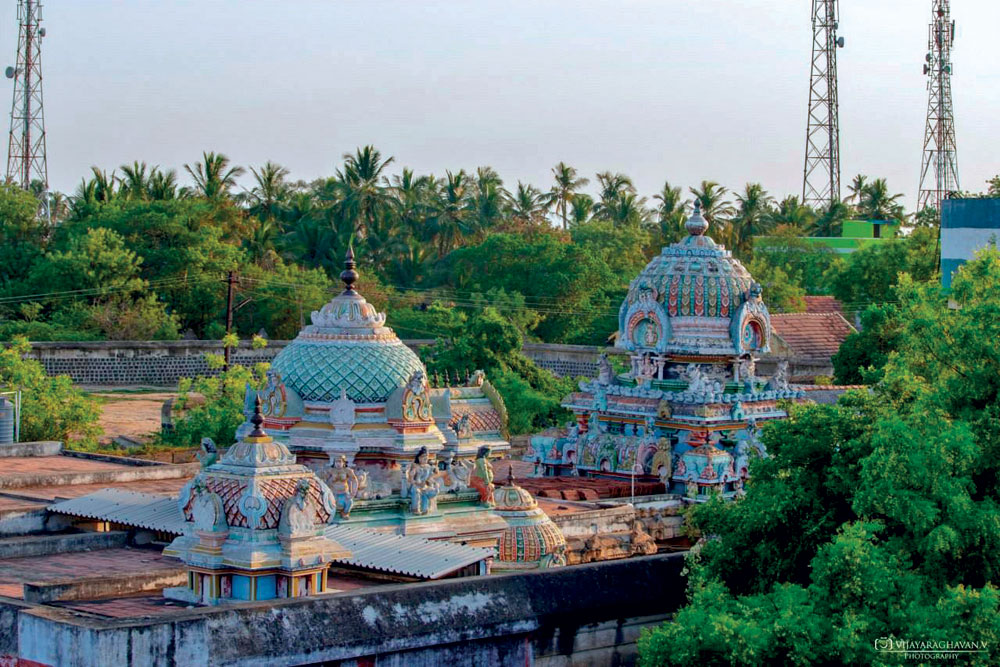
The 1,500-year-old Sundareswarar temple in Tiruchirappalli district, Tamil Nadu, is part of the Tiruchendurai village and the claim that the land belonged to the Waqf Board would mean that the temple, too, was part of the board property
On its part, the Delhi Waqf Board argued that all of these and 124 other properties belonging to Muslims in villages in and around Raisina Hill were taken over by the British when they moved the capital to Delhi from Calcutta. However, in the face of intense protests by the community, the British gave back religious properties to the community. Former Prime Minister Indira Gandhi set up two committees, one of which—the SMH Burney Committee—suggested that the government take over and own those lands and properties but return them to users on a leasehold basis. This suggestion was dismissed as ridiculous by the Waqf Board which pointed out that even the Union government had accepted the “principle” that once a Waqf property, always a Waqf property. Crucially, these properties could not be owned by anyone except Allah, and a community institution could only monitor/govern them.
However, many state Waqf Boards have continued to use Waqf declarations over time to claim lands and properties as their own, based on traditional use and personal decrees by property owners. Interesting as the case of Tiruchendurai village was, there was an equally significant development on the Waqf properties acquisition front in 2023. The Supreme Court ruled that the mere publication of a property as a Waqf property was insufficient to declare the property as a Waqf. The judgment came in response to an appeal by the Salem Muslim Burial Ground Protection Committee against the Madras High Court after the latter rejected their claims over a piece of land on the contention that the land had always been a traditional burial ground and once it was Waqf land, it would always remain Waqf land.
The apex court said that mere issuance of notification was not sufficient for the purpose as it rejected the argument that the land in question was declared Waqf property by a notification of April 29, 1959. Such a declaration also had to be in consonance with the provisions of the Waqf Act, 1954, or the Waqf Act, 1995. In order for a property to be recognised legally as a Waqf property, the Board had to go through due statutory process, including two surveys, settlement of disputes, and the submission of the report to the state government and to the Waqf Board.
Quoting from the judgment, a report at the time in Lawstreet said: “The provisions would reveal that the notification under Section 5 of both the Acts declaring the list of the Waqfs shall only be published after completion of the process as laid down under Section 4 of the above Acts, which provides for two surveys, settlement of disputes arising thereto and the submission of the report to the State Government and to the Board. Therefore, conducting of the surveys before declaring a property a Waqf property is a sine qua non. In the case at hand, there is no material or evidence on record that before issuing notification under Section 5 of the Waqf Act, 1954, any procedure or the survey was conducted…”
Interestingly, the court also held that the land was not proved conclusively to be used traditionally for a religious or charitable purpose by a person professing Islam. There was no proof that the land was used traditionally for burials prior to 1900 or 1867 and as such, could not be legally claimed as Waqf property on the basis of traditional use.
Muslims in India today account for around 14.2 per cent of India’s population (Census 2011) and Waqf is a personal property given by Muslims for a specific purpose: religious, charitable, or for other private purposes. In short, Waqf property is any personal property donated to the Board for socio-religious and charitable purposes (such as burial grounds, free hospitals for the poor, educational institutions, hostels for poor students, shelter for the destitute, orphanages, and so on). Essentially, it means property donated directly to Allah, the Almighty, in perpetuity. It is inalienable and irrevocable.
The Waqf Boards collectively own an estimated 610,000 immovable properties countrywide. The real estate value of these properties, meant to be used solely for the religious, charitable, social, and educational needs of the poor of the community (if used for commercial purposes, the proceeds go towards charitable activities), is mostly a grey area. Once a property is declared as Waqf, its character cannot be reversed. What adds to the complexity and mystery of the properties governed by Waqf Boards is that once donated by decree, based on tradition, written will, and other means, the properties are deemed to be owned by God and cannot revert to the original owners or their successors, nor can it be transferred to anyone else. However, the beneficiaries of the declared Waqf properties can vary.
An estimated 8.5 lakh Waqf properties, spread over eight lakh acres of land, are governed by state Waqf Boards in India. The real estate value of these properties has never been fully assessed but is estimated to run into hundreds of millions of rupees today. Today, there are 30 state Waqf Boards in India, across 28 states and Union territories.
The Waqf Act of 1954 was passed by the Jawaharlal Nehru government to improve the supervision and administration of Waqfs, leading to the centralisation of Waqfs and the establishment of the Central Waqf Council, a statutory body under the Union Ministry of Minority Affairs.
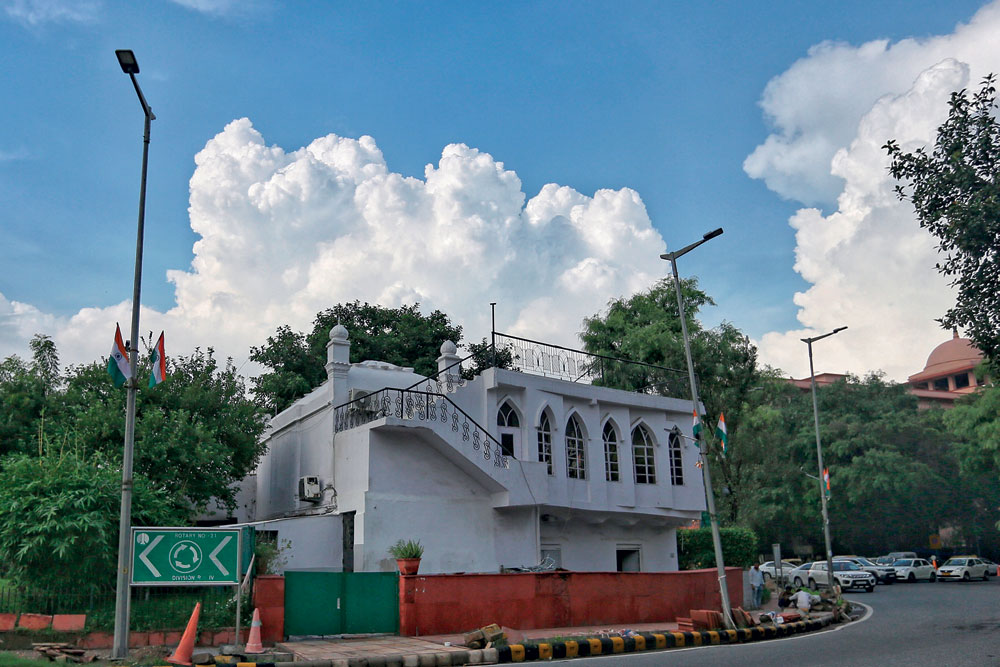
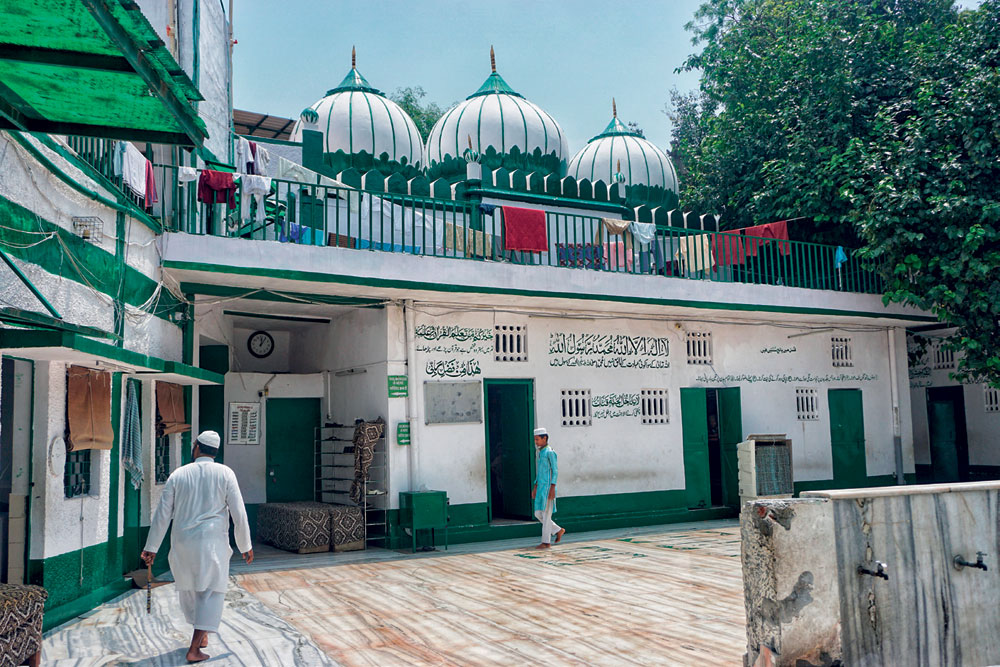
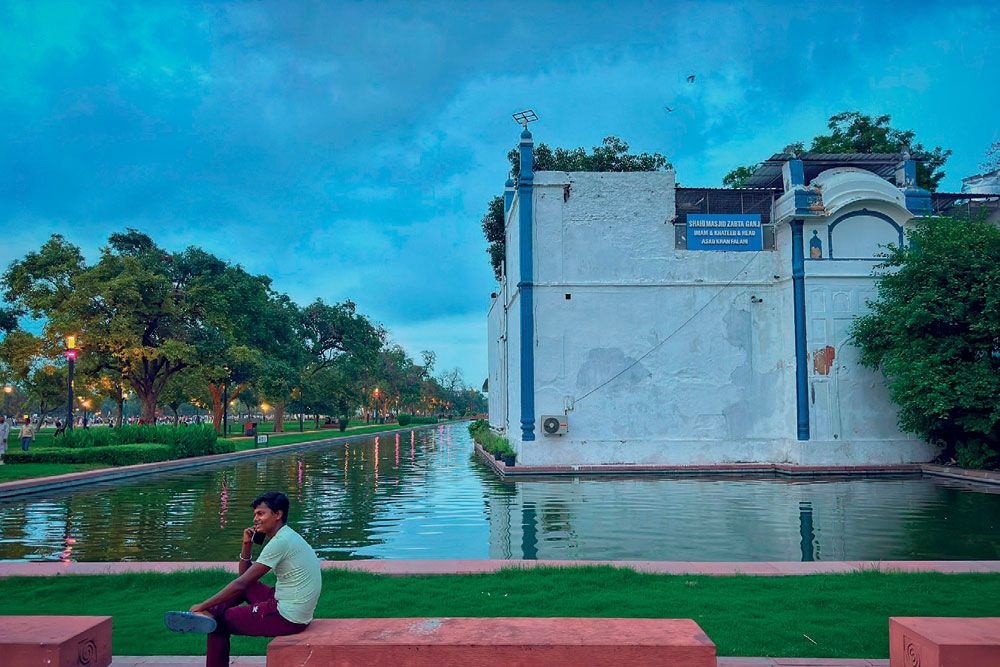
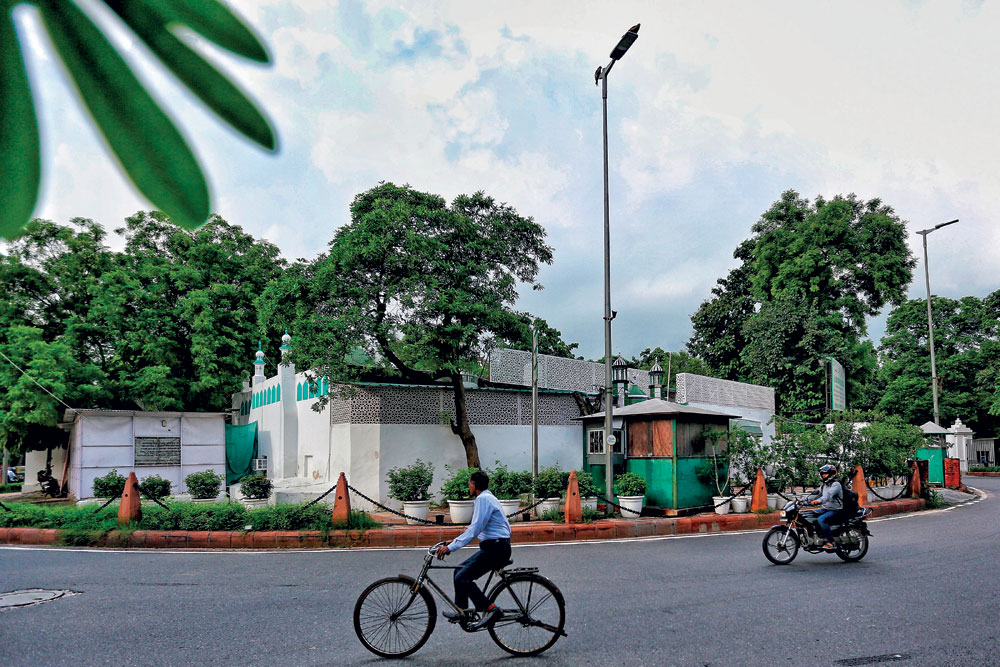
As envisaged originally, or supposedly so, the far-reaching powers that were given to the Muslim community under the 1954 Act were meant to impart confidence after the traumatic events of 1947. A cursory comparison between the 1954 Act and The Mussalman Waqf Act, 1923 shows how dramatic these changes were. Under the 1923 Act, it was civil courts that supervised the management of the Waqfs. The only role the community had was in the appointment of mutawallis or managers for these individual Waqfs. These mutawallis were, however, responsible to a secular authority, the civil courts of the land. After Independence, in an avowedly secular republic, the courts were wholly eliminated from the system of managing Waqfs. Over time, the Waqf Boards and other related institutions came to acquire judicial powers as well, a function that should remain with secular authorities. Section 83 of The Waqf Act, 1995 mandates the creation of Waqf Tribunals. A bare reading of that Act shows the far-reaching powers that vest in such institutions. What is ironic is that these powers have been slowly leached away from the state in the name of secularism.
If anything, it is time to revise the history and understanding of these changes made after Independence. The Nehru government supposedly allowed the Muslim community to manage its institutions, including the Waqf Boards, to impart confidence to the community. Seen in isolation, many continue to believe this myth. But it is a myth nonetheless. For if one examines a very different set of events—the constant illegal migration of Muslims from the then East Pakistan—a very different hue is cast on Nehruvian secularism. The reality is that the Nehru regime and its successors continued to appease Muslims for political purposes. This included their approval of illegal migration into Assam where the very demography of the Brahmaputra Valley changed beyond recognition. This was even after key Congress leaders in the state, Gopinath Bordoloi, and after him, Bishnuram Medhi, protested against the Centre’s indifference to the issue. “Indifference” is an understatement. After Medhi, the second chief minister of Assam, continued to protest, he was shunted out of his job and sent off to faraway Madras State (as Tamil Nadu was then called).
The story of the Waqf Boards, the steady gathering of judicial powers in the hands of the Muslim community with respect to Waqfs, and appeasement are thus not isolated issues: they were part and parcel of assiduously building a vote bank in a ‘secular’ republic at the cost of other communities that were deprived of similar rights and powers to manage their religious institutions. That this process was begun during the Nehru years makes the entire project insidious. By 2013, when the 1995 Act was amended in the dying days of the UPA-II regime, the process was complete. Today, any property belonging to any person or community can simply be declared a Waqf by a mere notification. The courts can come to your aid. But good luck with that. As liberals are so fond of saying, “The process is the punishment.”
In 2015, the NDA government launched a probe into an illegal act by the UPA government whereby it transferred 123 properties in Delhi to the Waqf Board just prior to losing power. Most of these properties were of high market value, including those in Connaught Place, Lodhi Road and Karol Bagh
The Modi government started a dedicated online portal, Waqf Assets Management System of India (WAMSI) for computerisation, digitisation of records of Waqf properties, and their Geographic Information System (GIS) mapping. This was to prevent encroachments on these properties but also to prevent the illegal usurping of properties as Waqfs without the completion of statutory processes. The Waqf property details on WAMSI were entered by the respective State Waqf Boards (SWBs). Until December 2022, a total of 8,65,646 immovable properties and 3,53,850 GIS mapping of Waqf properties were entered on the WAMSI portal.
According to the Central Waqf Board, some 354,913 estates in all and 866,035 properties spread over 802,000 acres of land are governed by its various state and Union territory Boards. Ironically, of the 871,292 immovable properties currently officially listed as Waqfs, close to 58,898 are reportedly encroached upon, and for 437,974, there is little or no information available. Some recent figures peg properties currently controlled by Waqf Boards at 8.7 lakh properties spanning 9.4 lakh acres across India, with an estimated value of a staggering ₹1.2 lakh crore.
Yet, the provisions governing the Waqf properties continue to make it clear that once declared Waqf, no property can ever revert, even to its original owner. Quite aside from blatantly and seriously violating the philanthropic principles for which Waqf properties were historically meant to be used—denying justice to both individuals and to the needy in the community—the information also points to gross mismanagement and wanton misuse of these properties.
Not surprisingly, there are innumerable legal challenges pending in courts against Waqf Boards’ claim to properties, many of them based on the violation of fundamental rights defined by the Constitution for citizens of all faiths. The government and the judiciary are seen by many, including members of the Muslim community, as dragging their feet overruling firmly in these cases based on the principles of secularism, inclusive representation, and justice. It is these persistent and multiple layers of ill-managed prime properties claimed by Waqf Boards, running through decades even prior to Independence, based on a projected and reinforced moral and religious superiority, asserting insulation from and authority over the law of the land governing millions of citizens—irrespective of faith—that has raised the hackles of many legal experts, historians, analysts, and observers.
It is against this backdrop that increasing rulings and judgments by civil courts have begun to tighten the checks against the possible erosion of secular constitutional values and individual rights by the Waqf Boards in the exercise of their “inalienable and irrevocable” rights regarding the governance of Waqf properties. The Supreme Court’s ruling last year in the case of the Salem Burial Ground, insisting that due procedure should be followed and just declaration of property as Waqf or even claiming traditional use without conclusive evidence of this was insufficient, is a case in point.
In the case of Karnataka Waqf Board vs. Mohd Nazeer Ahmad, the court challenged the contention that Waqf properties should be only used for religious purposes and insisted that they should be used for the welfare of the community, thus preventing chances of encroachment and widening the scope of use. In the case of Kanya Inter College vs. Rajendra Rawat, the Uttarakhand High Court ruled that appointments to Waqf Boards should be fair and impartial. In other cases, courts have ruled that all issues pertaining to Waqf properties cannot be decided by the Boards and Waqf Act alone and that civil courts could not be barred absolutely from ruling on Waqf property cases.
In Waqf Board, Rajasthan vs. Jindal Saw Ltd, the apex court maintained that a dilapidated platform cannot become a religious place for namaaz under the Waqf Act without enough proof of such dedicated and prolonged use. This was yet another check against possible land grabs and encroachment. All these cases and court rulings and even intra-community disputes (as in a case from Uttar Pradesh where a burial ground was converted to a shopping mall, drawing the wrath of the community, clearly indicating that some Waqf Board members had unduly gained advantages for themselves) are proof that there is ongoing struggle afoot to stop Waqf Boards from assuming draconian powers under the Waqf Act in a country with a secular Constitution.
AUTHOR ANAND RANGANATHAN maintains that it was not mere coincidence that Waqf Boards are today the third-largest landowner in India after Defence and Railways, “with much of its land holding—rather amusingly, pre-Independence— an area endowment of the insidious give and take between the British and the Muslims. Indeed, many of the Waqf landholdings go as far back as 1857. 77% of Delhi is on Waqf land…” He says that after Independence, though, many of these properties were taken over by the government and remained there. This was so until the 2014 controversy over the “denotification” of the 123 properties and their transfer by the UPA-II government to the Waqf Board, changing their status radically and, presumably, opening a Pandora’s box of controversies.
He writes further, “We are a special people: that message is all-pervasive and uncompromising. It is this message that allows Muslims to claim that the Gyanvapi mosque built atop the grand Kashi Vishwanath temple is on Waqf land. So, was the grand Kashi temple demolished by Aurangzeb and so confirmed through his own certified biography Masir-e-Alamgiri, also on Waqf land? It’s this message that allows Muslims to claim that the 1,500-year-old iconic Manendiyavalli Chandrasekhara swami temple in Tamil Nadu is on Waqf land [this is when Islam is only 1,400 years old].” Further: “The Waqf Act, 1995 is blatantly communal, discriminatory, unconstitutional and draconian…what adds to the absurdity is the fact that it is now a perpetual motion machine, gobbling up property and government largesse with speed and stealth, as though out to prove Dr BR Ambedkar and his profound prophecy of Muslims under divine obligation to convert Dar-al-Harb to Dar-al- Islam. It is no longer an arcane endowment that is centuries old; it is an ever-growing mutant, having perfectly adapted to the appeasing and virtue-signalling State.”
That “appeasing and virtue-signalling state”, in fact, made significant changes to the Waqf Act of 1995, meant to regulate Muslim charitable endowments, and for the first time in independent India, made it a powerful political tool to appease Muslims and capture vote banks through community assets, property, and religious manipulation. In contrast, Hindus, Sikhs, Christians, and other communities had no such special laws or provisions related to their religious assets. Hindu temples continued to be governed by multiple legislations such as the Religious Endowment Act of 1863 and the Indian Trusts Act of 1882. The Hindu Religious Endowments Commission (1960) declared that government control over temples was essential to prevent their maladministration. Besides, several states leaned on their own rules to control Hindu religious institutions.
For instance, the Karnataka Legislative Assembly recently passed the Karnataka Hindu Religious Institutions and Charitable Endowments (Amendment) Bill, 2024 to regulate temples in the state, amending the Karnataka Hindu Religious Institutions and Charitable Endowments Act of 1997. With this, the government could collect 10 per cent and 5 per cent of the income from temples that have annual revenue of more than `1 crore and `10 lakh, respectively, to be used for the welfare of the archakas and the development of temples with income less than `5 lakh.
Recent statistics indicate that it is the Catholic Church of India (CCI), in fact, and not the Waqf Board, that is the second-largest non-agricultural land owner in the country, even if not the richest one. Recent data from the Government Land Information System website has revealed that the church’s extensive land holdings are estimated to encompass seven crore hectares (17.29 crore acres) across India, with a total value of around `20,000 crore. As of February 2021, reports indicate that the Indian government owned approximately 15,531 square kilometres of land, utilised by various public sector companies and ministries. In contrast, the CCI’s vast portfolio includes a diverse array of properties, such as churches, schools, and colleges. Much of these properties also go back to pre-Independence times, banking heavily on the largesse of the British government and under the Indian Church Act of 1927, dogged by charges of forced acquisition.
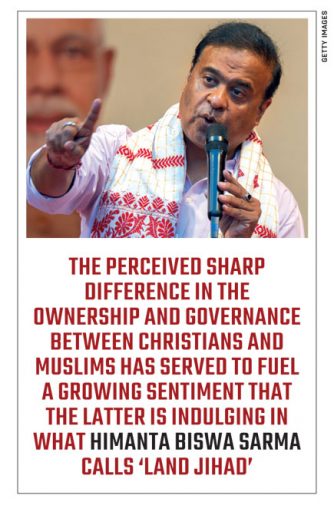
However, there is a substantial difference in the way the properties are governed and used. Although Christians (of all denominations) constitute just over two per cent of the total population of the country, the value addition by the community to the larger social, healthcare, educational, and economic development of the society (not just the Christian community alone) after Independence is vastly huge in reach and scope. This is in stark contrast to the Muslim community which was the elite class in the subcontinent and British India for ages, besides being seven times more in population. According to a report by the government, the Christian population in India is around 28 million, or 2.3 per cent of the total population. This makes Christianity a minority religion in India, which is primarily Hindu (79.8 per cent) and Muslim (14.2 per cent). The religion is deeply rooted in states such as Kerala, and Goa as well as in the northeastern states. The Catholic Bishops’ Conference of India (CBCI) manages these properties countrywide. According to some reports, the church administered 2,457 hospital dispensaries, 240 medical or nursing colleges, 28 general colleges, five engineering colleges, 3,765 secondary schools, 7,319 primary schools, and 3,187 nursery schools close to a decade back, in 2012. But despite governmental directives in 1965, on official recognition of British-era land grants, many disputes persist in the Christian case as well.
The perceived sharp difference in the ownership, governance, and use of community properties between the two communities of Indian Christians and Muslims has only served to fuel a growing sentiment that the latter is, in fact, indulging in what Assam’s current Chief Minister Himanta Biswa Sarma calls “land jihad”. This was prior to the last Assembly election, the first time this phrase was heard in the BJP ecosystem. It is now increasingly being used in consonance with the expanding claims by the Waqf Board on properties and lands countrywide. Resentment also peaked over the fact that while lands and properties owned by Hindus in Pakistan were long taken over by Muslim citizens and the Pakistan government, the Indian government by and large not only backed the policy of non-interference by state but even proactively amended relevant Waqf property laws time and again to empower and enable further the authority of the state and Waqf Boards on them. Amendments to the 2013 law have, for instance, removed the reference to those donating being followers of Islam alone to any person, of any faith.
‘Land jihad’ was described as a proven and entrenched mechanism by which Bengali Muslims in Assam, or ‘miyas’, literally chain-ganged land owners of other communities, mostly indigenous Assamese people, to sell their lands to intermediaries, to be subsequently sold to Muslims. Such practices were reportedly widespread in border areas where immigrants lived in substantial numbers, including Sorbhog, Dhubri, and so on. Consequently, BJP pitched heavily for the distribution of official land deeds or pattas to highly insecure indigenous Assamese in order to decisively counter the power and influence of Bangladeshi immigrants, who would be weeded out.
The Modi government’s proposed changes on August 8 to amend the Waqf Act, 1995 were in continuation of efforts by legal experts, lawmakers, ordinary citizens of all faiths, and all stakeholders to place the Act and the governance of Waqf properties countrywide firmly within the framework of constitutional ideals and principles, without stripping the Indian Muslim community of its individuality in this key matter. They aim to, for the first time, include women and non-Muslim Waqf Board members even while hiking the regulatory powers of the Centre on Waqf properties and their efficient management through a draft law tentatively named The Unified Waqf Management, Empowerment, Efficiency, and Development Act, 2024.
Following suggestions by political parties, the Bill has now been sent to a Joint Parliamentary Committee for wider scrutiny to make the changes to the Act as seamless as possible, hassle-free, and in complete consonance with constitutional ideals and principles.
The Grow Th Of Waqf Wealth
Pre-Independence
• Originally, there was no religion-based distinc•tion for the management of charitable and other public, community-based properties during the early stages of the British Empire in India. Distinctions based on religion were a later development.
• A key case on the nature of a Waqf was decided by the Privy Council in December 1894 in the matter of Abul Fata Mahomed Ishak and others vs. Russomoy Dhur Chowdhry and others. The highest court of the British Empire held that a Waqf could not be a “private settlement” and unless a substantial fraction of it was not devoted to charity, it could not be termed a Waqf.
• In response to this challenge, the colonial legislature passed The Mussalman Waqf Validating Act, 1913 that explicitly allowed the creation of Waqfs by a Muslim “for the maintenance and support wholly or par•tially of his family, children or descendants.” This had been outlawed by the Privy Council in 1894. The founder of Pakistan, Muhammad Ali Jinnah, had a key role in piloting this Bill.
• This legal foundation for ‘private’ Waqfs would go on to play havoc after Independence.
• In 1923, The Mussalman Waqf Act put the manage•ment of Waqfs on a sound legal footing and explicitly removed Waqfs for personal benefit from the definition of a Waqf.
• The 1923 Act handed the su•perintendence of Waqfs to district courts and made the mutawallis—or managers of Waqfs—responsible to the courts for maintenance of accounts, etc.
• A Waqf could only be made by a person professing the Muslim faith, a provision that would be substan•tially altered in meaning and content in the 21st century, almost 65 years after Independence.
• Over time, different prov•inces crafted their own Waqf Acts to suit their own local needs and circumstances. In those provinces, the 1923 Act ceased to have any force.
Post-Independence
• The Muslim Waqfs Act, 1954 was a major departure from the pre-Independence institutional management of waqfs.
• The Act came into existence less than a decade after the Partition and the Jawaharlal Nehru govern•ment did not want to upset the Muslim community. Even then, the Bill that would later become the 1954 Act was the result of a private member’s Bill and not the government initiating the legislation.
• This would be in contrast to the series of Bills dealing with the Hindu community that were drafted and piloted by the government. Even at that early date, the govern•ment left the initiative for legislating matters of inter•est to Muslims entirely in the hands of the commu•nity. An avowedly secular government should have taken matters into its own hands, as it often did with nearly all important pieces of legislation.
• The Bill was moved by Congress MP Syed Mohammad Ahmad Kazmi from UP on July 16, 1952 in Lok Sabha and was passed two years later and became law on May 21, 1954 after the president’s assent.
• One member of the Parliamentary Select Committee that examined the Bill, Mohanlal Saxena, dissented and said that 10 states did not want a Central Act on the subject. He went on to say that even in the Central Act, it was the states that were to give shape to the proposed Waqf Boards. It made no sense for the Centre to enact such a law.
• The Act marked a total departure from the 1923 and other provincial laws dealing with waqfs. Earlier, the judiciary was entrusted with the management of waqfs by supervising mutawallis. After the 1954 Act, Waqf Boards were given the task.
• On paper, the composi•tion of these boards was broad-based, but in reality, the management was entrusted totally to the Muslim community to the exclusion of others. Section 13 of the 1954 Act prescribed disqualifica•tions for appointment to such boards and the very first one [Section 13(a)] was that a person could not be appointed if “he is not a Muslim and is less than twenty-one years of age.” There were no provisions for appointing women to these Boards.
• Section 27 of the Act empowered the Board to collect information on whether a property in question is a waqf. Section 27(1) says the decision of the Board in this respect shall be “final” unless revoked or modified by a civil court. This section and its successors in different Waqf Acts and amendments was tilted heavily in favour of the Muslim community over time to the point that any private property would be threatened and liable for takeover as a waqf. The genesis of that dangerous development lies in the 1954 Act. It never existed in pre-Independence Acts.
• A Waqf Inquiry Commit•tee was appointed by the Centre to examine the working of the 1954 Act. The Committee found various shortcomings in the Act and recommended a series of steps. Based on these, an amendment was passed in 1984.
• The amended Act could not be fully implemented as the community and the Waqf Boards had become politically powerful by then and virtually vetoed many of the constructive sugges•tions of the Committee.
The Waqf Act, 1995
• The law was enacted three years after the disputed structure at Ayodhya was de•molished and the government of the day wanted to buttress its ‘secular’ credentials.
• It further tilted the balance in favour of the Muslim community when it came to managing Waqfs.
• The Act created separate Waqf Tribunals who were to decide on disputes related to properties that were Waqfs. Section 83(7) of the Act made the decision of the Tribunal “final” and “binding” on parties in a dispute. Section 83(8) specified that no appeal could be made from a decision of the Tribunal.
• Section 6 of the Act made the decisions of the Waqf Boards final and an appeal to the Tribunal could not be made later than a year after the publication of the list of Waqfs by the Boards.
• Ominously, the explanation to Section 6 spells that “any person interested therein” shall include also every person who, though not interested in the Waqf concerned, is interested in such property. In effect, a property of a person who is not directly related to a Waqf but whose property has come into dispute, would have to adhere to the decisions of a Waqf Board. Recourse to civil courts was made very difficult, if not impossible.
• These were sweeping powers that were granted to the Muslim community and would be misused in the years to come.
Waqf (Amendment) Act, 2013
• The Amendment Act was passed in the dying months of the UPA II government and was probably one of the most destructive pieces of legislation passed by that government. It threw the ordinary meaning of ‘secularism’ out of the window and tilted the scales drastically in favour of the Muslim community.
• The amendment twisted the meaning of a Waqf out of shape: Until 2013, a Waqf was defined as a “permanent dedication by a person professing Islam.” This was the definition in the 1923 and 1954 and 1995 Acts. In the 2013 amendment, this was changed to “permanent dedication by any person, of any moveable or immovable property for any purpose recognised by the Muslim law as pious, religious or charitable.” Literally, any property of any community was now under the ambit of the Waqf law.
• Section 83 of the 1995 Act that dealt with Waqf Tribunals was modified and these Tribunals were given powers to evict tenants and determine the rights of those who had the lease to the property and those who had made the lease. These powers have been specially bestowed on the Muslim community. In case of encroachments on temple and church lands, other communities have no power to evict encroachers and have to move courts to secure their rights.
• The cost of surveying Waqfs was to be borne by mutawallis. After 2013, these costs would be met by the state governments concerned. No reason was given as to why state governments should bear these costs.
• The 2013 amended Section 6 of the 1995 Act replacing the expression “any per•son interested therein” to “any person aggrieved”. This change was of immense consequence and was part and parcel of expanding the definition of Waqf to include non-Muslims within its purview. By then so many properties that were originally not Waqfs had been taken over and turned into Waqf lands that this change became imperative.
• The transfer of properties into Waqfs became a one-way process. After 2013, any sale, gift, exchange or mortgage of a Waqf property was declared void to begin with and could only be done under special circumstances with the prior permission of the Waqf Board.
About The Author
MOst Popular
3

/wp-content/uploads/2025/07/Cover_Crashcause.jpg)













More Columns
Bihar: On the Road to Progress Open Avenues
The Bihar Model: Balancing Governance, Growth and Inclusion Open Avenues
Caution: Contents May Be Delicious V Shoba